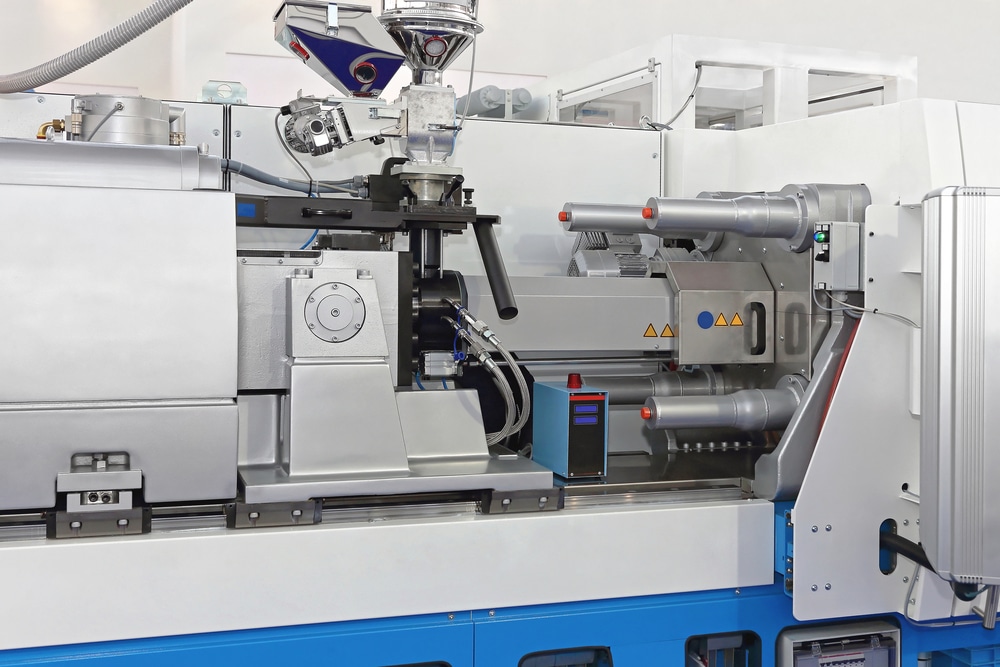Historically, one of the biggest challenges for companies bringing new products to the market has been tooling costs. Traditional manufacturing techniques, such as injection molding, require high upfront investments and minimum order quantities, which leave companies vulnerable to financial risk. Furthermore, given that injection molding requires a significant time investment to produce parts, it can make companies slow to respond to market demand.
For companies looking for a more cost-effective and agile alternative to injection molding, 3D printing presents a unique opportunity. To create product variants, additive manufacturing can easily refine designs digitally instead of making new molds. Eliminating tooling reduces capital expenses and product turnaround time, and increases design freedom. Read on for a more in-depth breakdown of these advantages.

3D Printing as an Alternative to Injection Molding
3D printing can provide a range of benefits, including reduced initial investment costs and faster design-to-production cycles, compared to injection molding. Here’s how:
1. Eliminate Tooling for Lower Up-Front Cost
Using conventional injection processes, tooling is a significant hurdle that must be addressed. Expensive molds must be created with each product design, including design variations, updates, and improvements.
3D printing eliminates the need for molds, as designs are created digitally and then directly printed. Reducing the up-front capital investment required to fabricate traditional molds and associated tooling can save hundreds of thousands of dollars or more over the lifecycle of a product.
2. Accelerate Design-to-Production
Injection molding can have a design-to-production time up to ten times longer than 3D printing. It can be even longer for certain products or more complex designs. New molds are developed, manufactured, and tested for each new product and variation made with injection molding. Both time-consuming and costly, the traditional manufacturing approach is a hurdle for companies that need agility in their production operations and fast design-to-production cycle times.
Additive manufacturing’s ability to produce functional prototypes, eliminates the time needed to develop and test molds and allows for multiple designs to be evaluated and tested concurrently. . Companies adopting a 3D printing functional prototype strategy can compress multiple design iterations saving valuable development time, accelerating the design-to-production process, and more quickly meet changing market demands.
| Improve your production turnaround time from 5-7 weeks with injection molding to 1-2 weeks with 3D printing. |
3. Reduce Inventory
Injection molding is ideal for high-volume production runs of the same product or piece. However, the minimum order quantities associated with this operation type can prove to be problematic under certain circumstances. If demand changes, companies can be at risk of overstocking inventory. The risk is particularly high with pieces that are newly introduced to the market or niche.
3D printing’s versatility and ability to support fast turnaround times allow for economical low-volume production runs and quick product prints to address inventory gaps. The increased agility enables companies to respond faster to consumer demand and eliminate or reduce risks like overstocking inventory.
4. Enable Continuous Improvement
To manufacture product variations may require retooling, requiring time, and capital. And, if there were issues during production test runs, further tooling changes may be required. The redesign-to-production cycle can be a time consuming and costly process.
3D printing enables companies to plan and manage continuous product improvement. Planned and unplanned improvements are quickly implemented in production parts by modifying digital files, 3D printing functional samples, and validating improved parts. Continuous product improvement, utilizing 3D printing, allows companies to quickly respond to market demands and make product improvements a cost-effective and streamlined process.
The Freedom to Innovate: 3D Printing’s Design Advantages
3D printing enables two major advantages over injection molding when it comes to overall product design:
Simplifying Manufacturing Through Part Reduction
3D printers are perfect for bringing complex design concepts into reality. With injection molding, companies are limited in their ability to create products as intended. Often, a product or part is manufactured as multiple pieces and then assembled due to injection molding tooling limitations, complexity, and cost.
In contrast, 3D printers provide unmatched flexibility, enabling companies to simplify their manufacturing process by reducing the number of parts and assembly steps to produce products.
More Durable Products
Enabling products to be made with fewer parts also increases product durability. Fewer parts mean fewer glue and screw connections, reducing potential points of failure.
Base materials used in 3D printing are also becoming increasingly tougher and more impact-resistant, increasing the product lifespan.
Choose the Manufacturing Method That’s Best For You
With 3D printing technology, organizations have an alternative to injection molding. Eliminating tooling, 3D printing reduces upfront manufacturing costs, accelerates design-to-production cycles, and reduces risk from excess inventory. Companies can also alter designs more quickly and respond more quickly to market demand, being more agile, cost-efficient, and versatile.
For more information on how 3D printing can keep your business’s production agile and expand design possibilities, visit our contact page or call (650) 336-0888.
